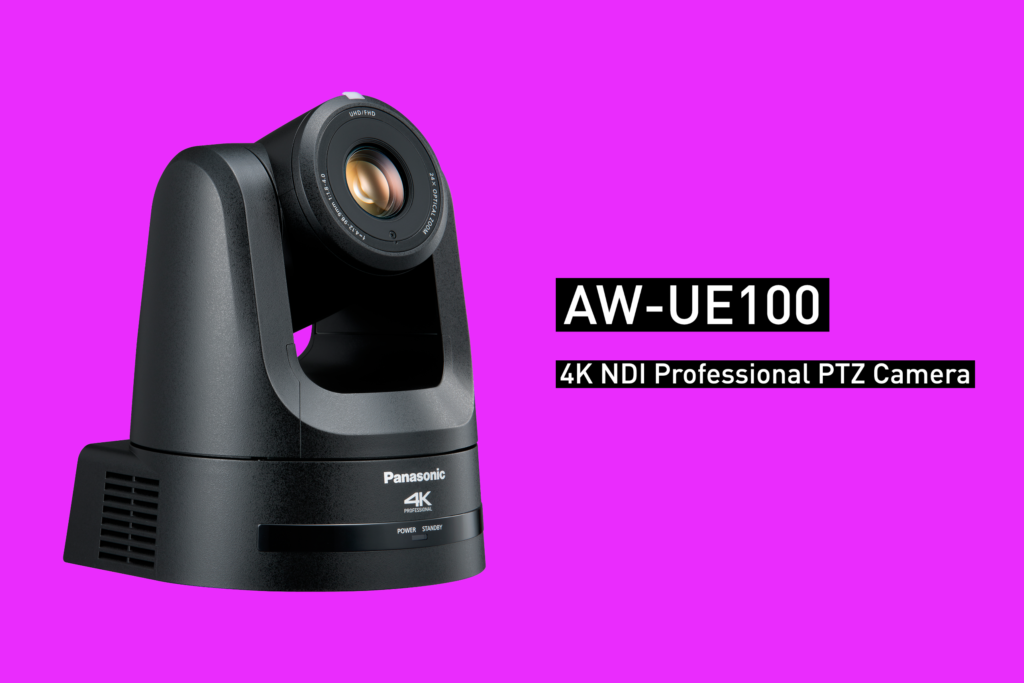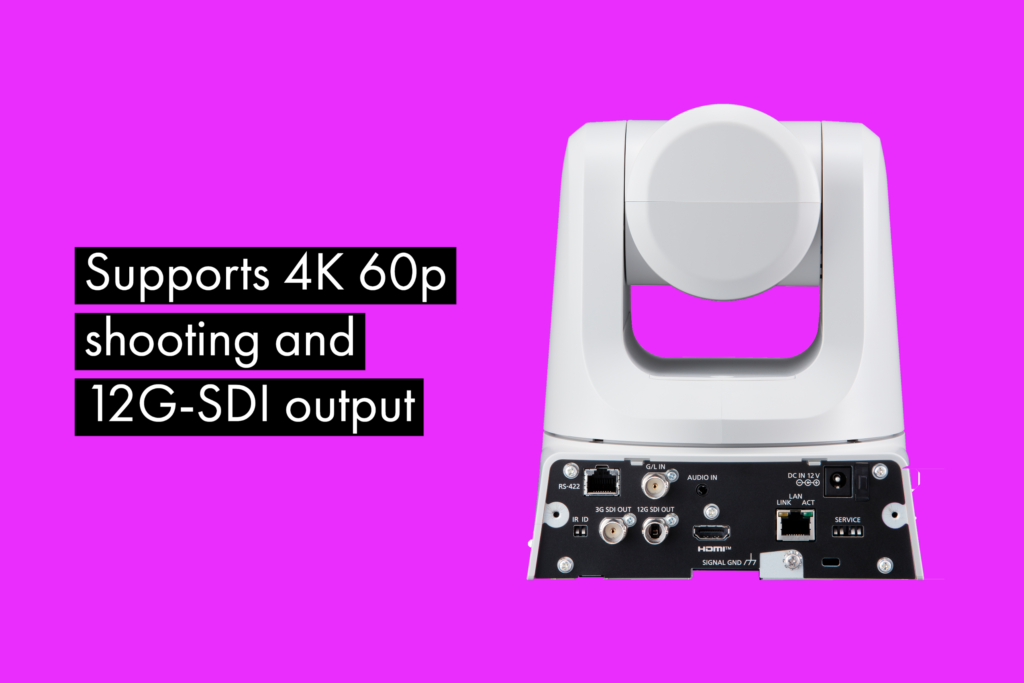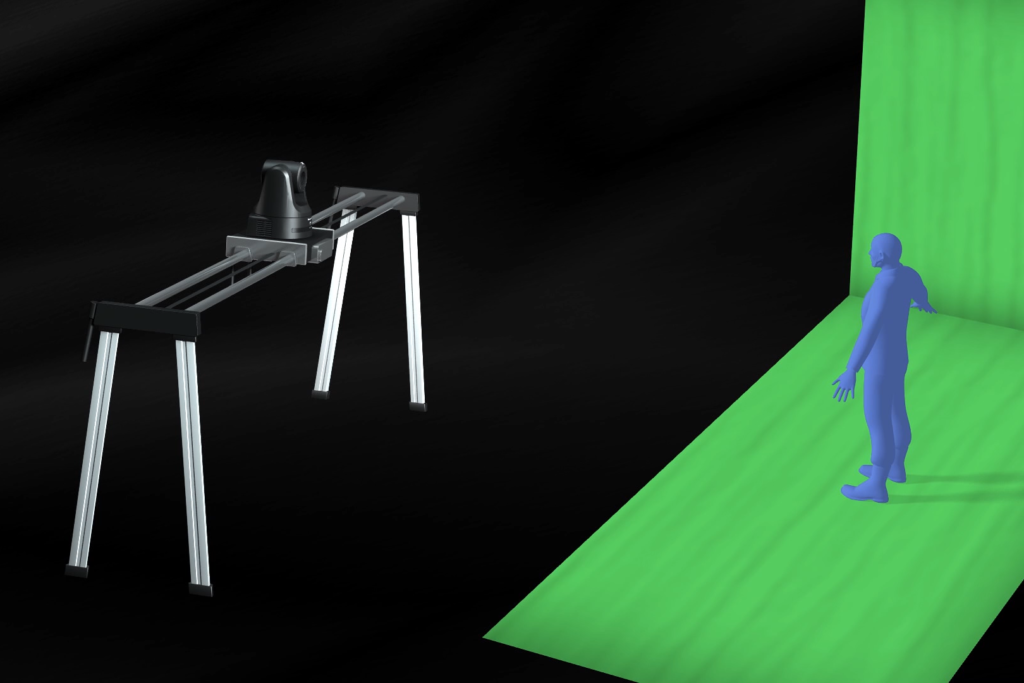July 21, 2020
5 min read
In May 2020, we introduced the AW-UE100 integrated PTZ (Pan/Tilt/Zoom) camera that is the industry’s first 4K/60p PTZ camera to support high-bandwidth NDI and Secure Reliable Transport (SRT). The other key feature is a new direct drive motor for smoother pan and tilt movement, which is ideal for live remote and studio production in broadcast, staging, corporate, sports and house of worship applications.
The UE100 contains a 1/2.5-type 4K MOS sensor to capture UHD 4K/60p video and supports a number of digital video interfaces including 12G-SDI, 3G-SDI, HDMI and IP. When working in tight spaces, the camera contains a wide-angle view of 74.1 degrees and its 24x optical zoom delivers high image quality at different focal lengths.
We recently spoke with Hamid James, Product Manager – Remote Production, to discuss key features of the UE100, as well as using the PTZ camera for live remote streaming applications.
Check out the AW-UE100 PTZ camera
Introducing the AW-UE100 4K NDI Professional PTZ Camera from Panasonic on Vimeo.
QUESTION: Give us an intro to the AW-UE100 and how it fits in with Panasonic’s Pro PTZ lineup?
HAMID JAMES: The UE100 sits between the AW-UE150 and the AW-HE130 camera. It is a 4K 60p camera with direct drive so it can play in all verticals our current 4K and HD cameras perform in. It's our first PTZ camera within the Panasonic lineup that has High Bandwidth NDI, Direct Drive, as well as 4K at 60p for SRT.
QUESTION: Can you explain what Direct Drive is?
JAMES: With Direct Drive, there are less gears in the camera system so there is more direct access between the head and the motor. Because of the reduction of gears, pan and tilt movement is much quieter and smoother and the response time is much quicker than traditional PTZ cameras. This will be advantageous for sporting events where you might need a quick pan to follow a player moving down the field. You will definitely experience a noticeable difference between a camera that has Direct Drive versus a camera that does not.

QUESTION: You mentioned the UE100 will sit between the AW-UE150 and AW-HE130 in the Pro PTZ lineup. How does the camera compare to our flagship UE150?
JAMES: The UE150 is still considered our top of the line, ‘crème de la crème’ PTZ camera. The UE150 has a 1-inch sensor, a 75.1-degree viewing angle, supports V-Log for HDR capture. The UE100 contains a 1/2.5 sensor, a wide viewing angle of 74.1 and does not support V-Log or HDR. Like the UE150, the UE100 does support the Free-D protocol for those who want to work in AR and VR applications. Unlike the UE150, the UE100 is our first PTZ that supports High Bandwidth NDI and High Efficiency NDI. The UI allows you to easily toggle between the two options based on the customer's needs and bandwidth support. A lot of our cameras support NDI HX, which is high efficiency, low bandwidth NDI. The UE100’s High Bandwidth NDI means that 4k at 60p with a reduction in latency if your camera is in an environment where there are bandwidth limitations, you can still utilize High Efficiency NDI to stream content. This makes the UE100 an ideal streaming PTZ camera.
QUESTION: What was the main motivation for the development of the UE100?
JAMES: The number one reason for developing the UE100 was listening to our customers and our continuous desire to improve our product and solution offerings. We really want to push the boundaries of our PTZ feature set showing what can be done with a small remote camera form factor versus a traditional shoulder-mount studio camera or handheld camcorder. The UE150 is a broadcast-level camera with a 1-inch sensor but the UE100 will look to push the boundaries in the streaming market because of its full support of High Bandwidth NDI, RTMP, RTMPS, as well as SRT, which is the most secure way to stream over a public network. I’m very excited to see the use of this camera in streaming applications, as well as in AR and VR applications.

QUESTION: Speaking of AR and VR applications, can you explain what the Free-D protocol is and how it applies to the UE100 and UE150?
JAMES: Free-D is a standard protocol that outputs positioning data via the PTZ camera. What that means is that the PTZ camera can output pan, tilt, zoom, focus and iris data over either Ethernet, or serial communication in sync with genlock input. This data is ingested into a VR engine similar like Unreal gaming engine or similar solutions. Once you have talent within your VR environment, and you’ve created AR assets around this talent, the Free-D position information from your PTZ camera can position the assets correctly around the talent in the VR environment.
You see this a lot in news and sports broadcasting where they are giving simulation for weather or sports stats. For example, during an election period, next to a newscaster, a content display will arise from the ground, or from the ceiling, and it shows the current status of a particular candidate and how he or she is doing in a particular state. Those are situations where VR and AR is being used. We’re seeing a lot of this being trickled down to mobile devices, as well as big growth in Esports where producers want to utilize VR and AR for live games.
QUESTION: We recently used the Free-D protocol in the Unreal Engine for The Future Of Video Production virtual event. Can you talk a little about the Unreal Engine as it applies to the Free-D protocol?
JAMES: Until recently, if a house of worship, education, broadcaster or corporate professional wanted to use an AR or VR application, they would need to employ high-end solutions from known vendors to accomplish this. The servers and ancillary hardware you would need to run your applications are quite costly. What we've done is help create a Free-D plug-in for both the UE150 and soon to be released UE100 into the Unreal Engine, which is a real-time 3D gaming platform. This allows any developer, who can download the Unreal application that they can load into their PC based on Unreal specs, plus download the Free-D plugin for our UE100 or UE 150 cameras. Now you’re able to create AR and VR with our PTZ camera at a much lower cost. I believe this will open up the market for the low and middle tiers for AR and VR applications.

With the Free-D plug-in for the Unreal Engine, you're now able to create AR and VR environments at a much lower cost.
QUESTION: When will the UE100 be released?
JAMES: It will be released in August, 2020.
For more information on the AW-UE100, click through here.
To download the Panasonic PTZ Free-D plugin for Epic Games Unreal Engine, visit https://disruptar.com/downloads/.
![]()
